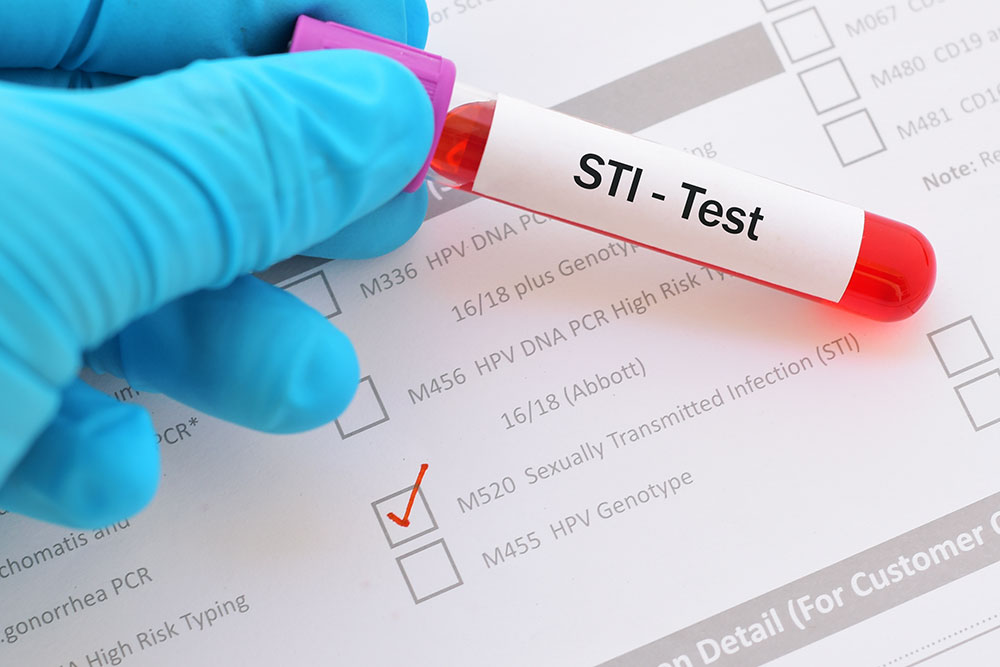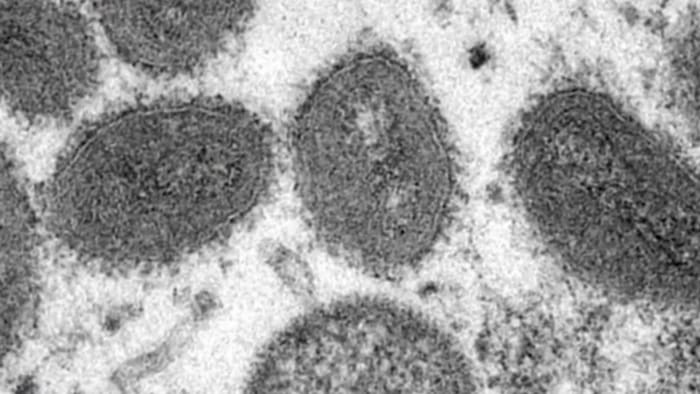Symptoms of STDs are often related to reproductive organ health, particularly pain, discharge, and ulcers in the vagina or penis.
Patients suffering from sexually transmitted diseases are numerous all over the world and for this reason numerous prevention campaigns are launched every year.
Several studies have shown that in the United States alone, about 20 million are infected with sexually transmitted diseases every year.
The nature of these diseases means that those affected are often young people between the ages of 15 and 24.
Causes and risk factors of sexually transmitted diseases
In general, sexually transmitted diseases are by definition caused by an infection after sexual intercourse or sexual activity.
Often venereal or parasitic diseases, for example from scabies, are also considered sexually transmitted diseases.
Failure to use condoms and having multiple partners increases the risk of contracting these infections.
Among the risk factors of sexually transmitted diseases are
first sexual intercourse at a young age, under 17 years of age
number of sexual partners
age
use of drugs, narcotics and alcohol
relationships with infected partners
sexual assault
What are the main sexually transmitted diseases
Sexually transmitted diseases can be distinguished according to the type of infection, or the type of sexual activity underlying the transmission.
They do not only concern complete heterosexual intercourse, but can also occur after practices such as oral, anal or anal sex.
The different pathologies can be classified according to the etiology, therefore the triggering agents.
Among the bacterial causes are
Gonorrhea, also called blenorrhagia, is a disease caused by the bacterium Neisseria gonorrhoeae. Symptoms include pain when urinating, difficulty urinating, vaginal discharge, and penile discharge for men. These symptoms can appear even 30 days after infection. In many cases, patients may be asymptomatic.
Syphilis, also called Lue, is an infection caused by a spirochete known as Treponema Pallidum. This disease is divided into primary and secondary syphilis. In the first case, the symptoms can present as ulcers on the penis, anus, vagina, vulva, rectum and in some cases also on the lips and mouth. In the second case, however, the infection can reach the blood, leading to skin lesions, but it can also be associated with fever, nausea, tiredness and loss of appetite.
Among the diseases with viral etiology, however, there are
Human papillomavirus HPV: One of the most common sexually transmitted infections, it is often symptom-free. After an incubation period of the virus, warts, growths, pain, discomfort and itching may appear on the cervix, vagina, vulva, anus and perineum. In severe cases, cervical cancer can occur.
HSV, also known as Herpes Simplex Virus is a virus that is associated with vesicular rash and which leads to many other symptoms, such as muscle pain, headache, fever, exhaustion and malaise. Again, the incubation period of the virus can last up to 12 days, during which the patient may not have symptoms. It is common for the first symptoms to appear after events such as trauma, menstruation, exposure to sunlight or stress.
Sexually transmitted diseases can also be caused by fungi, such as
Candida, which is an infection caused by a fungus called Candida Albicans. This fungus is physiologically present in the body, but can become harmful. The infection can affect the oral cavity, vagina and can also lead to intestinal symptoms. It rarely affects the penis, but in case of infection it is absolutely recommended to avoid sexual intercourse in order not to transmit the pathogen.
Finally, some pathologies are linked almost exclusively to unprotected sexual intercourse, such as
hepatitis C, a disease caused by the HCV virus that leads to inflammation of the scar tissue in the liver possibly resulting in liver failure and liver cancer.
hepatitis B, caused by the HBV virus which can also lead, in the most serious cases, to liver failure and liver cancer.
HIV
Sexually transmitted diseases are many and varied in terms of symptoms and causes
For this reason it is not easy to identify a specific list of symptoms related to specific pathogens.
Furthermore, many of these diseases have an incubation period which can lead to the appearance of the first symptoms after a considerable time, even after years.
However, it is possible to identify the symptoms of the most common sexually transmitted diseases, which can represent a first alarm bell.
Among these are various discomforts in the genital area, therefore the vagina and penis.
Depending on the sexual practice involved, however, these symptoms can also appear in the anus, on the skin or in the mouth.
These can include pain, itching, irritation, but also fatigue, fever and headache.
Certainly one of the consequences of these diseases is psychological, as contracting these diseases can be embarrassing for the patient.
However, the complications of many of these pathologies can be really serious and even lead to the appearance of tumors or, in the case of AIDS, to death if not properly treated.
Talking to your doctor is therefore essential to understand how to best manage them.
Treatments and cures
The right treatments to be prescribed for STDs require having found the root cause of the disease.
This is not always easy, also due to the patient’s embarrassment and uncertainty in addressing certain issues with their doctor, and this causes many remedies to be symptomatic.
This term is used for those treatments aimed at resolving the symptoms, but not specific in the eradication of the pathogen.
If the causes of sexually transmitted diseases are bacterial, the treatment is usually efficient and rapid, but requires the patient to abstain from sexual intercourse.
This phase can have variable duration, until the infection is definitively eliminated.
This requirement is essential for two reasons: not to worsen the infection and not to infect the sexual partner.
However, some more complex STDs, such as HIV and herpes, can be lifelong.
This characteristic of theirs requires particular attention to the use of condoms during intercourse, to avoid infecting your partner.
How to prevent sexually transmitted diseases
Surely preventing sexually transmitted diseases is the best way to avoid incurring serious complications.
Prevention methods are essential especially for incurable diseases such as HIV or herpes.
Certainly the ways to prevent sexually transmitted diseases can be:
comply with sanitary measures, paying particular attention to intimate personal hygiene;
avoid the use of drugs and alcohol;
carry out vaccines for hepatitis A, some types of HPV and hepatitis B;
use condoms or condoms, which are essential as a method of preventing sexually transmitted diseases. Many pathologies, including viral ones, can in fact be prevented through the use of polyurethane, polyisoprene or latex condoms.
For any information on sexually transmitted diseases, prevention and causes, it is advisable to consult a doctor, in order to investigate the best method of prevention and treatment on a case-by-case basis.
AIDS and HIV
Among the best known and most serious sexually transmitted diseases there is certainly AIDS, also known as acquired immune deficiency syndrome.
This infectious disease is caused by the human immunodeficiency virus, HIV.
The virus can be transmitted not only through unprotected sexual intercourse, but also by contact with blood or from mother to child during childbirth or breastfeeding.
Among the characteristics of this virus is the ability to replicate quickly and to exploit white blood cells, destroying them.
Symptoms of sexually transmitted diseases such as AIDS include fever, joint and/or muscle pain, and swollen lymph glands.
Between men and women these symptoms can vary greatly, for example many women may suffer from yeast and vaginal infections, pelvic inflammatory disease, papilloma virus and even infertility.
Symptoms of HIV include:
fever
rash
sore throat
enlarged lymph nodes
cough and respiratory diseases
mouth ulcers
muscle and joint pain
urinary infections
exhaustion
A specific test, a blood test called ELISA, may be required to diagnose this sexually transmitted disease.
This test is used to check for antibodies in the blood, particularly against specific antigens.
In this way it is possible to identify a specific pathogen responsible for AIDS, through the HIV-Ab test.
There is currently no definitive cure for this disease, which is why it is essential to prevent it through various practices, including protected sex with a condom and being careful not to contaminate the blood of others through open wounds.
Read Also
Emergency Live Even More…Live: Download The New Free App Of Your Newspaper For IOS And Android
HIV: Definition, Causes, Symptoms, Diagnosis And Transmission
Antiretroviral Drugs: What Abacavir Oral Solution Is And What It Does
HIV: Initial Symptoms In Women And Men
HIV: How Soon Do Symptoms Appear? The 4 Stages Of Infection
Sanofi Pasteur Study Shows Efficacy Of Co-Administration Of Covid And Influenza Vaccines
WHO: ‘Pandemic Will Continue Unless Vaccines Are Distributed To Poor Countries’
Covid And HIV: ‘Monoclonal Antibodies For The Cures Of The Future’
HIV, MRNA Vaccine Study By Iavi And Moderna
Kaposi’s Sarcoma: Discover What It Is
Tumours Of Endothelial Tissues: Kaposi’s Sarcoma
Sexually Transmitted Diseases: Gonorrhoea
Symptoms, Diagnosis And Treatment Of Cystopyelitis
Sexually Transmitted Diseases: Chlamydia
Pelvic Floor Dysfunction: What It Is And How To Treat It
Pelvic Floor Dysfunction: Risk Factors
Salpingitis: Causes And Complications Of This Fallopian Tube Inflammation
Hysterosalpingography: Preparation And Usefulness Of The Examination
Gynaecological Cancers: What To Know To Prevent Them
Infections Of The Bladder Mucosa: Cystitis
Colposcopy: The Test Of The Vagina And Cervix
Colposcopy: What It Is And What It Is For
Gender Medicine And Women’s Health: Better Care And Prevention For Women
Nausea In Pregnancy: Tips And Strategies
Anorexia Nervosa: What Are The Symptoms, How To Intervene
Colposcopy: What Is It?
Condylomas: What They Are And How To Treat Them
Papilloma Virus Infection And Prevention
What Is The Papilloma Virus And How Can It Be Treated?
Sexually Transmitted Diseases: Gonorrhea
Sexual Addiction (Hypersexuality): Causes, Symptoms, Diagnosis And Treatment
Source
Pagine Bianche
Discovered on: 2023-06-02 10:57:49
Source: Sexually transmitted diseases: here’s what they are



